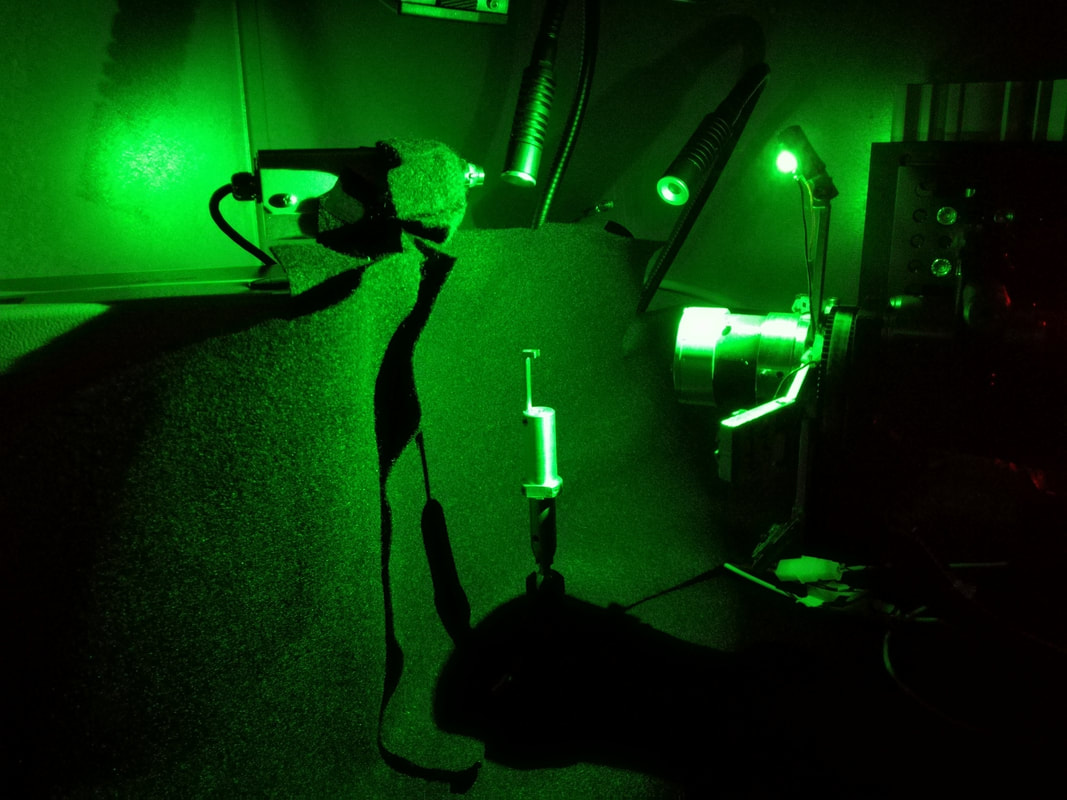Encoding compass information in the brainTo unravel how compass information is encoded in the brain, we study the monarch butterfly brain electrophysiologically. Thereby, we use intracellular and extracellular (tetrode) recordings. During intracellular recordings, we use sharp electrodes that allows us to observe the neural activity of a single neuron. Subsequently, we inject a tracer into the neuron for an anatomical characterization. The neurons are tested for their sensitivity to sky compass signals such as polarized light, or the sun, and to local landmarks. As these intracellular recordings allow only for a time-limited analysis, we are also recording the cells’ activity extracellularly (tetrode recordings). This does not only allow us to study the activity of a group of neurons for several hours, but it allows the recording from neurons in the brain, while the animal is behaving (e.g. while the animal is tethered to a rod at the center of a flight simulator).
SPECIFIC QUESTIONS
Participating SCIENTISTS |
CONTACT
Dr. Basil el Jundi
Norwegian University of Science and Technology Institute of Biology | Department of Animal Physiology Gløshaugen | Realfagbygget | Høgskoleringen 5 7491 Trondheim | Norway Email: basil.el.jundi[at]ntnu.no |
More |


